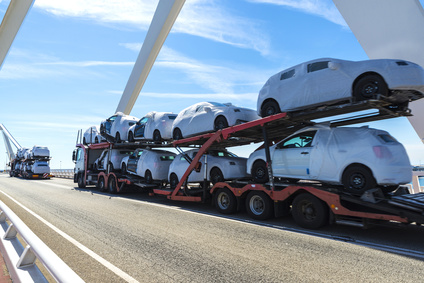Hybrid and electric vehicles are increasingly becoming popular options for both consumers and commercial fleet operators due to their fuel efficiency and minimal emissions. As their production and sales continue to grow, efficient transportation methods are required to deliver these vehicles from factories to dealerships and customers. This article discusses some of the considerations and challenges related to shipping hybrid and electric vehicles Transportation Of Next-Gen Vehicles.
Battery Pack Handling
A key distinction between conventional gasoline vehicles and their hybrid/electric counterparts is the large battery packs that power the electric motors and allow these vehicles to run solely on electric power or provide a boost to the internal combustion engine. Proper handling and securing of these battery packs during transportation is important to prevent damage. The batteries can be heavy weighing several hundred pounds so special equipment like cranes may be needed for loading and offloading. Transportation companies also need to ensure the batteries are kept within their ideal temperature ranges to maintain peak performance and safety. Excessive heat or cold could degrade battery life or even cause dangerous thermal events.
Floor Space Utilization
Compared to regular cars, hybrids and EVs tend to have larger footprints due to additional components like the battery packs. This means transport vehicles like trucks and ship cargo holds may not be able to carry as many next-gen vehicles compared to conventional ones. The floor space gets utilized less efficiently. Some automakers and transportation firms experimented with customized storage racks and frameworks to stack vehicles in multiple layers and optimize interior volume. Modular and flexible designs facilitated loading a wide range of vehicle sizes. However, tightly compact loading requires careful packaging to avoid damage during transit.
Transportation Of Next-Gen Vehicles – Weight Considerations
Heavier battery packs also increase the overall weight of hybrids and electric vehicles. This is a factor that influences transportation logistics. Heavier loads mean trucks, trains and ships can transport fewer vehicles in a single trip. It costs more in terms of fuel consumed. Weight restrictions on roads, bridges and cargo vessel capacity have to be considered too. Some distribution centers may need upgrades to facilitate handling of overweight vehicles. The maximum vehicle weight bearable by different transport modes shapes distribution networks and delivery routes.
Charging Requirements
Unlike gasoline vehicles, electric vehicles have to be charged before delivery to customers. This requires coordination between automakers and transport companies. Parts of the supply chain may need electrification to enable en-route or intermediary vehicle charging. Transport crews require training on safely connecting vehicles to chargers. They must monitor charging status. For long distance shipments, automakers may have to dispatch partially charged EVs to dealerships for final top-ups based on local electricity networks and charger availability.
Special Permits and Regulations
| Location | Regulations |
| North America | DOT permits needed for transport of large volumes of lithium-ion batteries. Highway weight limits for electric trucks. Special training for hazmat classification. |
| Europe | ADR regulations for carriage of dangerous goods. Weight exemptions for electric vehicles on some roads. Bonus financial incentives for low-emission freight. |
| Asia | Restrictions on night travel for electric trucks in some countries. Port electrification programs facilitate ship-to-shore EV transport in major hubs using electric cranes and vehicles. |
Transportation of hybrids and EVs often involves dealing with unique regulations. Special permits are required in some jurisdictions for large battery shipments due to hazardous material handling requirements. Vehicle weight laws also have to be considered especially for electric trucks. The rules constantly evolve with technology advancements and environmental protection efforts.
Infrastructure Interventions
Hybrids and EVs pose new infrastructure needs beyond conventional fuel stations and repair garages. Delivery routes and distribution networks require electrification or hydrogen refueling to support electric trucks utilized for transport. Ports and terminals involved in water or rail freight may need upgrades like charging roads, stalls, inverted pantographs for ship-to-shore power, hydrogen fuelling, etc. to facilitate import and export of next-gen vehicles. Governments offer incentives to encourage development of specialized infrastructure at critical points in automotive supply chains to stimulate efficient logistics support for sustainable mobility solutions.
Transportation Of Next-Gen Vehicles Technology Innovation
Newer electric and fuel cell-based vehicles have longer driving ranges compared to early electric cars providing more flexibility in delivery routes. Advances like bidirectional charging enable EVs to double up as distributed energy storage assets, tapping their batteries to power other loads if needed or export power back to the grid. This helps optimize fleet vehicle usage. Hybrid-electric trucks integrating combustion engines as range extenders are gaining popularity for their ability to cover longer distances like multi-state deliveries. Automakers constantly work on lightweighting batteries and materials to ease transportation constraints posed by vehicle weights.
Transportation Of Next-Gen Vehicles Parting Words:
Shipping of next-generation vehicles involves multifaceted considerations beyond conventional logistics. Coordinated efforts across the automotive and transportation sectors incorporating smart infrastructure, improved designs and newer technologies can help strengthen supply chain networks to meet the advancing needs of sustainable mobility markets.

